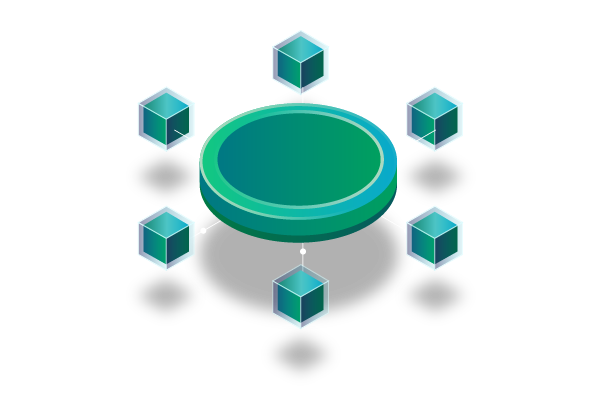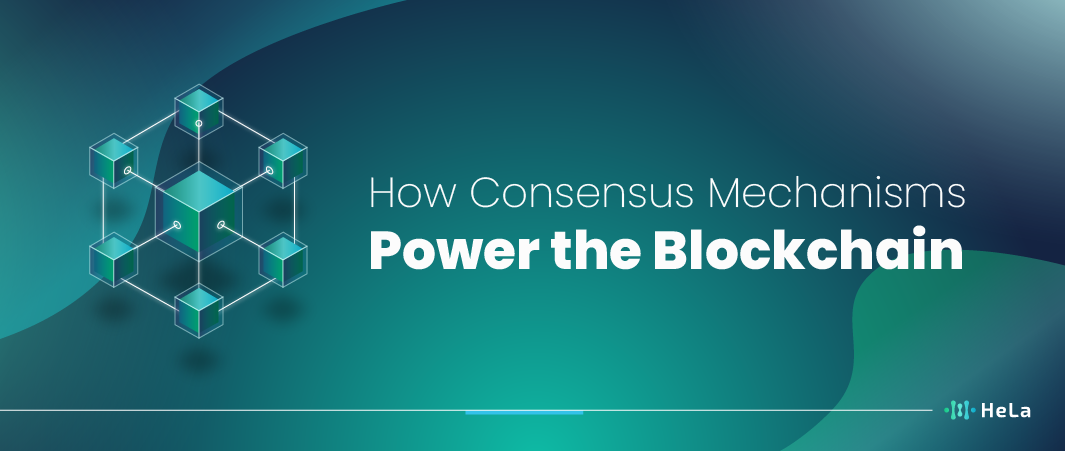The world of blockchain and cryptocurrency is filled with complex terms and innovative concepts that can be overwhelming for newcomers. One term that often comes up in discussions is “consensus mechanism.” But what exactly does it mean, and why is it crucial in the blockchain ecosystem?
Understanding the consensus mechanism is key to grasping how blockchain networks maintain their integrity and security. This article aims to demystify the concept of consensus in blockchain technology, exploring its various types and how they contribute to the overall functionality of decentralized systems.
What Is a Consensus Mechanism?

A consensus mechanism is like the glue that holds a blockchain network together. It’s essentially a set of rules that all the computers (nodes) in the network follow to make sure they’re all on the same page. Picture it as a big rulebook that keeps everyone in agreement about what’s a valid transaction and what’s not. Without this consensus thing, blockchain networks would be a real mess, open to all sorts of problems like hacks, mix-ups, and things just not working smoothly.
Also Read: Layer 1 vs Layer 2 : A Comprehensive Guide
In simpler terms, consensus is what makes a blockchain work like a well-oiled machine. It’s what stops one computer in the network from saying one thing and another saying something totally different. It’s how they all shake hands and say, “Yep, we agree, this is how we’re going to do things.” So, think of consensus as the guardian angel of a blockchain, making sure everything runs smoothly and everyone’s on the same page.
Types of Consensus Mechanisms

Several types of consensus mechanisms have been developed over the years, each with its own advantages and disadvantages. These consensus mechanisms can be broadly categorized into the following types:
1. Proof of Work (PoW)
The Consensus mechanism known as Proof of Work, which was made famous by Bitcoin, involves miners working to solve tricky math problems to confirm transactions and generate new blocks. The miner who cracks the problem first earns the reward, but this procedure requires a lot of energy and takes quite a bit of time.
2. Proof of Stake (PoS)
In the world of cryptocurrencies, Consensus, specifically in Proof of Stake (PoS), validators get picked to make new blocks by putting up a certain amount of coins as a kind of security deposit. This method is seen as a greener way compared to the energy-intensive Proof of Work (PoW) system. It’s what powers cryptocurrencies like Ethereum 2.0, where people who hold and are ready to lock up their coins can take part in confirming transactions and keeping the network secure.
3. Delegated Proof of Stake (DPoS)
Delegated Proof of Stake (DPoS) is a version of Proof of Stake (PoS) where a limited number of chosen nodes, known as delegates, play a pivotal role in reaching a consensus. These delegates are in charge of verifying transactions and forming new blocks, making the whole process quicker and more efficient. However, DPoS has faced criticism for potentially reducing decentralization since only a select few are entrusted with these responsibilities, unlike traditional PoS systems where many participants can contribute to the consensus process.
4. Byzantine Fault Tolerance (BFT)
Consensus, specifically the Byzantine Fault Tolerance (BFT) algorithm, is a way to ensure that a network can still function even if some of its participants are acting maliciously or face technical issues. In BFT, the system requires at least two-thirds of its nodes to agree on a transaction before considering it valid. This rule provides robust protection against different kinds of attacks, making it a reliable way for a network to agree on the order and validity of transactions.
The Importance of Consensus Mechanisms in Blockchain

Consensus mechanisms are the backbone of any blockchain network. They ensure that all transactions are verified and added to the blockchain in a manner that is secure, transparent, and irreversible. Without a robust consensus mechanism, a blockchain would be just a glorified database.
1. Security
- Securing the Network: A consensus mechanism’s main job is to keep the network safe from dishonest actions.
- Preventing Fraud: It does this by making sure that all the participants in the network are playing by the rules.
- Complex Problems or Stakes: To discourage bad actors, the system might ask nodes to either solve tricky puzzles or put their assets at risk.
- Protection Against Attacks: This helps keep the network strong and reliable, as it becomes less attractive for malicious individuals to try to mess with it.
2. Transparency
- Consensus mechanisms play a crucial role in making blockchain transparent. They ensure that every transaction goes through a verification process involving multiple participants (nodes).
- Once a transaction is successfully verified, it gets permanently recorded on the blockchain. This means it becomes a part of the public ledger, which is like an open book that anyone can read and check.
- Imagine the blockchain ledger as a digital history book where all transactions are written in a way that everyone can see and trust. This transparency helps in preventing fraud and maintaining trust in the system.
- This transparency is one of the key features that makes blockchain technology so promising and is especially useful in applications where trust and accountability are essential, such as in finance and supply chain management.
3. Efficiency
- Efficient consensus mechanisms are vital for blockchain networks that need to handle a lot of transactions. They make things faster and use less computer juice.
- Think of them like the traffic police of the blockchain highway, ensuring smooth and speedy transactions.
- These mechanisms are like the engine of a car; they determine how fast and how much power is needed to keep the blockchain going.
- When a blockchain has an efficient consensus mechanism, it’s like having a supercharged engine in your car – it can handle a ton of transactions without breaking a sweat.
Also Read: What Is Consensus Mechanism? Explore Blockchain and Cryptocurrency
How to Choose the Right Consensus Mechanism
Selecting the appropriate consensus mechanism for your blockchain venture is a pivotal choice. It’s like picking the beating heart of your project. You should weigh essential factors such as how secure you need your system to be, the degree of decentralization desired, and the nature of the application you intend to create. When it comes to Consensus mechanisms, you’ve got a few options to consider.
One popular choice is Proof of Work (PoW). It’s like a digital gold rush, where miners solve complex puzzles to validate transactions, ensuring security. However, it’s energy-intensive and may not be the greenest option. On the other hand, Proof of Stake (PoS) is more environmentally friendly, as validators are chosen based on the amount of cryptocurrency they hold and are willing to “stake” as collateral. It’s faster and cheaper but might be seen as less secure. Meanwhile, Delegated Proof of Stake (DPoS) allows token holders to vote for delegates who validate transactions, offering a balance between speed and security. So, choose your Consensus wisely; it’s the cornerstone of your blockchain project’s success.
Conclusion
The consensus mechanism is an integral part of blockchain technology, serving as the algorithmic process that allows for secure and efficient transaction validation. Whether it’s Proof of Work, Proof of Stake, or any other type, each has its own set of advantages and disadvantages tailored for specific use-cases.
As blockchain technology continues to evolve, so will consensus mechanisms, adapting to new challenges and requirements. Understanding the role and functionality of these algorithms is essential for anyone interested in the blockchain space, from developers to investors and end-users.
Disclaimer: The information provided by HeLa Labs in this article is intended for general informational purposes and does not reflect the company’s opinion. It is not intended as investment advice or recommendations. Readers are strongly advised to conduct their own thorough research and consult with a qualified financial advisor before making any financial decisions.

I am Carina Caringal, a technical writer specializing in blockchain engineering concepts, decentralized systems, crypto infrastructure, and Web3 technologies. My work focuses on analyzing and translating complex technical mechanisms into precise, structured, and insightful content for both developers and non-technical readers who want a deeper understanding of the decentralized ecosystem.
My background in blockchain and cryptocurrency is rooted in years of independent research, continuous learning, and hands-on exploration across multiple protocols and network architectures. I study the underlying mechanics of distributed ledger technology, from consensus algorithms and smart contract logic to network scalability, security models, cryptographic principles, and interoperability frameworks. This technical foundation shapes the way I approach every article, ensuring accuracy, depth, and relevance.
- Carina Caringalhttps://helalabs.com/blog/author/carina-caringal/
- Carina Caringalhttps://helalabs.com/blog/author/carina-caringal/
- Carina Caringalhttps://helalabs.com/blog/author/carina-caringal/
- Carina Caringalhttps://helalabs.com/blog/author/carina-caringal/

